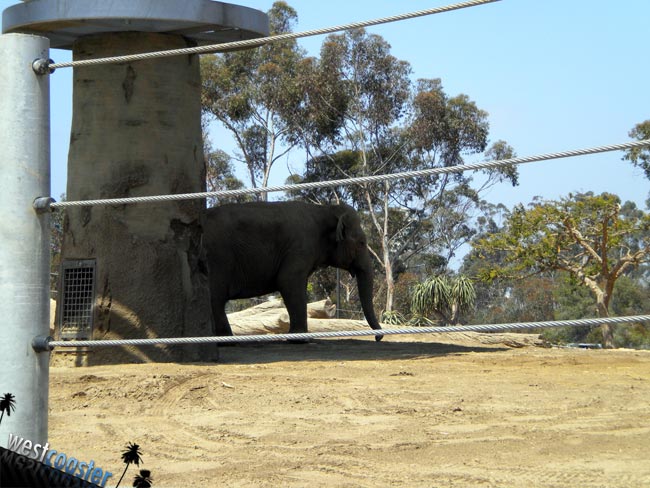 In May of this year, San Diego Zoo opened it's complex Elephant Odyssey. Incorporating a plethora of animal species revolving around the idea of extinction in California, the new exhibit zone presents a unique organizing element rarely seen in zoos: an abstract idea rather than biogeographic or Linnean systematics. Animals as diverse as African lions, Californian condors, and South American capybaras find homes in the Elephant Odyssey, and although the cerebral organizing element is unique, it remains to be seen if it is successful.
Let me break it down for you: California used to have a wide range of animals living on her land, but over time these species have become extinct. However, sister species still exist elsewhere in the world, and here they are with graphic panels and sculptural representations of the now extinct counterpart. Its strangeness may actually work to help make the story more clear--perhaps this jumble of seemingly unrelated animals will make people curious enough to actually read the panels for more information, and finally, the guests may walk away understanding a complex storyline related to their zoo experience. But, maybe I'm overly optimistic.
In May of this year, San Diego Zoo opened it's complex Elephant Odyssey. Incorporating a plethora of animal species revolving around the idea of extinction in California, the new exhibit zone presents a unique organizing element rarely seen in zoos: an abstract idea rather than biogeographic or Linnean systematics. Animals as diverse as African lions, Californian condors, and South American capybaras find homes in the Elephant Odyssey, and although the cerebral organizing element is unique, it remains to be seen if it is successful.
Let me break it down for you: California used to have a wide range of animals living on her land, but over time these species have become extinct. However, sister species still exist elsewhere in the world, and here they are with graphic panels and sculptural representations of the now extinct counterpart. Its strangeness may actually work to help make the story more clear--perhaps this jumble of seemingly unrelated animals will make people curious enough to actually read the panels for more information, and finally, the guests may walk away understanding a complex storyline related to their zoo experience. But, maybe I'm overly optimistic.

From the photos I've seen, the Zoo decided to keep naturalism at a minimum, giving the place a clearly sterile, mechanized and utilitarian quality. Of course, the exhibit is brand new and thus vegetation has not had a chance to grow in, but the prominence and visibility of barriers and other steely cold elements leads me to believe no amount of vegetation will ever create a natural environment throughout the Odyssey exhibits. Perhaps the Zoo should've deleted a few species to subsidize a softer, more comfortable experience.
The Stats:
- $45 million for entire exhibit area
- 7.5 acres total
- 35 species of animals
- 2.4 acres of elephant habitat (including 137,000 gallon pool with 7.5' deep end)
- 7 elephants (1 African, 6 Asian, including one bull)
- Brand new on-exhibit elephant care facility
- Restaurant overlooking the elephants
- Gift shop
Not sure if the $45 million also included their amazing exhibit website, but check it out here for more information.

























